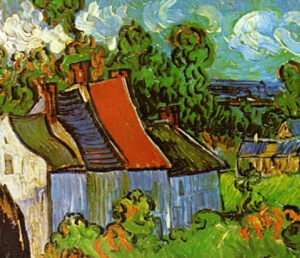Hydrologic Hysteria
(in Two Flavors)
& Seven Suggestions for Water Conservation
Dr. Ryan Hanning
When I was young, apocalyptic levels of rhetoric regarding water shortages were all the rage. Fear mongering can motivate action, at least for a while. But, absent an actual apocalypse, it gradually loses its effectiveness. On the other hand, we seem today to have the opposite problem: an over-developed confidence in the power of technologies (real and imagined) and in the actions of “experts” has numbed us to certain, immutable, mathematical facts about the universe. Indeed, steeped in an age of virtual worlds and choose-your-own-reality lifestyles, we seem almost to believe that we can legislate the laws of physics.
I grew up in California during the droughts of the 1980s, which meant a steady stream of water-sensitivity training. Turn off the water while shaving and brushing your teeth. Do not water your lawn during the day. Limit showers to five minutes — every other day if possible. These recommendations, along with sensationalistic nightly news reports of what to do when the taps run dry, did a lot to reduce individual water consumption. Eventually, though, a lot of people stopped thinking much about it. And none of it addressed deeper issues regarding poor management of this finite and precious resource. While we have improved from when I was a child (the U.S. now uses 275 million gallons per day, down from 360 million in 1980), we remain the third-largest consumer in the world, trailing only India and China, which have vastly higher populations than we do — and we have vastly higher per-capita consumption than they do. And we are still in water crisis, especially in the western United States.
Over a century ago, the water and power from the mighty Colorado River was harnessed to build the West. The project stands as a marvel of engineering, even to this day. The Colorado was altered to provide fresh water and hydroelectric power to seven growing states and northern Mexico. Today, the river provides water to over forty-million people and irrigates ninety percent of our nation’s winter crops. When we consider also the billions of dollars in revenue generated from tourism in natural parks, the wildlife refuges, and the river’s integral role in the history, culture, and life of dozens of first nations tribes, we start to get some idea of the significance of this natural resource; still, the scale and the importance of the Colorado River is hard to fully grasp. But even harder to grasp is the “logic” by which we are currently allocating it.
In 1922, the Colorado River Contract formed. This system, managed by technical experts in hydrology and legal experts in water rights, is regulated through a patchwork of laws and agreements politely known as “The Law of the River.” The Law of the River provides that the Upper Basin states (Colorado, Utah, Wyoming, and New Mexico) and the Lower Basin states (Arizona, California, and Nevada) each receive equal portions of 7.5 million acre-feet of water each year, with another 1.5 million acre-feet going to Mexico. Thus the total allotted by the “Law” is 16.5 million acre-feet per year. (An acre-foot is a standard measure of water volume: the amount it takes to cover one acre to a depth of one foot — roughly 326,000 gallons.)
Like all human laws, the Law of the River is only valid if it coincides with the laws of nature. In this case, that would include the ostensibly obvious axiom you can’t give more than you have. The current ten-year average flow is 13.4 million acre-feet per year. If you happened to notice that this is 3 million acre-feet less than what is allocated, you are doing better than the cadre of bureaucrats now running things.
What’s more, states have been consistently overdrawing their allotment. A combination of drought, rising temperatures, overuse, and an unhealthy dose of implacable Pollyannic optimism, has depleted the basins, which historically stored four times the annual need, to new record lows. Lake Mead, the largest reservoir in the US, which on average historically held 18.2 million acre-fee and which has the capacity to store 28.2 million acre-feet, is (as of this writing in mid 2022) holding 7.4 million acre-feet. This places the water level at around 1,040 feet above sea level. That precariously low level automatically authorizes the Secretary of the Interior to declare a water emergency and start pre-determined water restrictions. The lower the water levels go, the more severe the restrictions. At 1,025 feet the most severe restrictions kick in. At 950 feet (i.e. just 90 feet below our current level) the turbines stop generating electricity. And at 900 feet, the lake is a deadpool with no water flowing downstream.
During these distressing times, local water districts throughout the West are sounding the alarm, sort of — but, it seems, not loudly enough to change much of anything. The number of new developments in Arizona, Nevada, and California continues to rapidly increase, despite the rapid decline in available water. States are betting the farm (figuratively and literally) on their official allotment. But each state’s allotment is not only an abstraction, it is now a known fiction! Replacing the apocalyptic hysteria of my childhood, we now seem caught in a sort of hypnotic mass hysteria in which everyone must pretend that this all somehow makes sense.
Add on top of it all the current modeling (which granted is based on best guesses, but well-educated guesses nonetheless) that demonstrates a continuation of our trend of elevated temperatures, thus necessitates greater inputs of energy and water to keep homes cooled and lawns green (why there are lawns in the desert is another conversation). The increased heat and lack of rain mean that groundwater sources, which have built up over millions of years, are not replenishing. In California alone, two years of severe drought and overuse of groundwater have dried thousands of private wells, which had been used in rural communities for decades. The over pumping of the underground reservoirs also lowers the ground level, as the surface underneath collapses in the absence of water. Areas in the San Joaquin Valley, for example, are sinking at an estimated two feet per year! Yet the powers-that-be seem to be in no particular rush; they have given local groundwater agencies until the year 2040 to achieve sustainability.
Everything in normal life tells us that this is all rather ridiculous. We cannot ignore math nor bend it to do our bidding. My wife and I, like countless fathers and mothers of large families, know what it is like to feed children from finite resources. A pizza, a pot-roast, a birthday cake — all are easily divisible, but we cannot disregard the requirements of the physical universe when we do the dividing. There needs to be a grown-up in the room. There needs to be someone who is willing to give up his piece of the cake, or distribute what exists in equal portions, or say no to the kids who showed up late, or do something that makes sense. Promising one-quarter of the cake to each of eight people will not cut it. From time to time, God may grant us an Elijah-and-the-widow moment, but let’s not put him to the test: the fact that we do not have unlimited resources means that we have to use what we have with both gratitude and intelligence. This should not be news to anyone, yet we are surprisingly bad at it. Our only real options are increased efficiencies (i.e., making the cake go further), conservancy (i.e. eating less cake), and reuse (we will assume that our cake analogy has broken down at this point; let’s move on).
Whether you live in the U.S. West or anywhere else, you live on a planet that has been given an abundance of good things by its Creator, but you have not been given any guarantee that we won’t destroy those things if we are reckless, selfish, or irrational. We ought not act in fear or folly, but must act with prudence and wisdom. Do what you can as a citizen to petition law makers to acknowledge the laws of physics. And do what you can as a household to be a good steward of water and all the goods of the earth. Below are seven suggestions that might help.
1. Find out how much water you use
The first step to being a good steward is knowing how much you use. We suggest that you do a quick assessment of how much water you are directly using by looking at your water bill. You can also use online calculators that include indirect water usage from power, food, and material goods. The idea is to know how much water you are using and to assess how well you are stewarding it. We typically use much more water than we think we do. Our water bill is only a fraction of our total usage, given how much water is needed for the things we purchase and consume (more on that below). Set a simple goal for how much water you want your household to use. Commit to taking steps to better appreciate and use water. This of course varies by region, and specific location, but you get the idea.
2. Limit basic household use
The average American uses anywhere between eighty and one-hundred-twenty gallons of water a day to drink, go to the bathroom, prepare food, and to wash themselves, their clothes, and their dishes. Limiting direct use, and ensuring that the faucets, toilets, and shower heads are efficient and leak free can save thousands of gallons each year. A bath typically uses twenty to thirty gallons of water, a five minute shower about ten gallons, brushing teeth about one gallon, hand washing about one gallon, toilet flush about two gallons for newer, as much as four for older models, dishwasher six gallons for newer, as much as sixteen for older models, dishwashing by hand using the two tub camping method about nine gallons, washer machine about twenty-five gallons/load for newer, up to forty gallons for older models. Be aware, and be intentional about habitual changes you can make to reduce any of the above.
3. Plant and consume native plants, in season
Native species of plants often require much less water than imports. Native species have developed over years of natural evolution to do well within a specific climate and within specific seasons. Growing or buying native species while they are in season is a straightforward way to reduce water usage. If you fear the loss of your favorite fruit or vegetable out of season, purchase or grow extra in season and preserve them. Getting local seeds or rootstock of plants well adapted to your climate generally means better yields and less chance of disease. Sometimes non-native varieties have been carefully cultivated over generations by horticulturists to produce plants that are suitably adapted to your area. These plants are usually found at small, specialized growers so do your homework and learn from local growers in your area.
The USDA developed a map of thirteen zones based on the average minimum temperatures. Knowing the zone you live in is a helpful guide as most seed companies provide information based on the USDA hardiness zone map.
4. Work with your natural water flows.
This may be more applicable to rural landscapes than suburban neighborhoods but knowing how the water flows on your land will drastically impact where you build and how you plant. Understanding the low points on your property and how water moves in the various soils will provide the knowledge necessary to manage water much better. There is a reason that old farms plant on some hills and not others and leave seemingly dry creek beds unobstructed. An intimate knowledge of your land takes time, proximity, and intentional observation. When planning to build a structure, plant a garden, or use water for hydroelectric or mill power working with the natural flows will go a long way. Moving a garden a few hundred feet may mean only rarely having to water it, building a shed in a different spot may prevent seasonal flooding, or allow you to collect more rainwater.
In farming, the goal in drier climates is usually to slow the water down so it more evenly saturates your field or orchard. In wetter climates the goal is to direct its flow so not to flood or wash out valuable topsoil. Culverts, trenches, berms, storage tanks, ponds etc. can all play a role in managing the flow well as can the placement of crops, pasture, and livestock. Since water moves nutrients downhill, placing livestock carefully can increase their health as well as enrich soil below. In truth, a lot of this is as much art as it is science and an intimacy with the land you live on can provide the hydrological insights necessary to partner with water well.
5. Limit indirect use
Surprisingly the indirect or “virtual” water we consume in food, energy, fuel, clothing, consumer electronics, appliances, cars, etc. exceeds the amount of direct use by over a factor of 10. An oversimplified calculation based on the total freshwater used in the United States annually divided by the number of people in the United States yields an average daily use of a staggering 900-1000 gallons/day in virtual water. Tracking down where and how this water is used can be difficult. The biggest sources of virtual water use come from power, food, and consumable goods. Growing your own food or buying local and in-season produce can dramatically drop this number. The water usage in the production of clothing and consumer electronics is also incredibly high. A 100% cotton t-shirt uses about 659 gallons to grow the cotton, process the fabric, and produce the final garment. Jeans require about 2,000 gallons to grow, process, and produce. A cell phone requires about 3,000 gallons of water to wash the chips and form the thermoplastic. Lithium batteries, which power just about everything rechargeable, also require a lot of water, as do most mining processes, about 400 gallons/kilo. While modern manufacturing practices have thankfully reduced water usage and waste, our insatiable appetite for new tech and new clothes runs the risk of outpacing the newly gained efficiencies.
6. Limit electricity use
A further (enormous) corollary of limiting indirect use is limiting electricity use. Creating electricity requires copious amounts of water.
Energy production alone uses about 40% of our freshwater resources. This is down from a high of 53% in 2010 thanks to more sustainable methods of power generation, but even the more sustainable and renewable methods of electrical production are highly water dependent. The estimates for how much water is used within each method of power production are not always transparent or accurate. Equipment production, cooling, as well as losses to evaporation make comparisons easily skewed by the various lobbies that protect various interests. A 2012 study by the River Network estimates that coal and nuclear use 16 gallons/KWh and 15 gallons/KWh respectively. A later study by the Virginia Water Resources Center had higher estimates of 25 gallons/KWh. Natural Gas uses less water in its electricity production, as little as 6 gallons/KWh, but it is water-heavy in its extraction and refinement processes. Coastal nuclear plants that use salt water for cooling use considerably less fresh water and approach similar efficiencies as solar, which ranges from about 8 gallons/KWh for parabolic steam to as little as one gallon for photovoltaic (which only require water for production, cleaning, and in some cases cooling). Wind and hydro-electric are much less water dependent. Given the current distribution of energy production in the United States (38% Natural Gas, 22% Coal, 19% Nuclear, 20% renewables) and the average household use of 11,000 KWh/year each home uses around 100,000 gallons of freshwater simply in energy production. If we were to factor in the associated water use of extraction and refinement of fossil fuels the number nearly triples.
To put this into perspective, even a very conservative estimate of 200,000 gallons per year would be more than twice the amount an average family goes through in direct water use. By my calculations, that is enough to fill twelve large swimming pools (or, also by my calculations, 3,773 whiskey barrels) — so lower your electricity use! Besides all the other benefits, doing so will greatly reduce your unintentional water consumption (presumably without affecting your whiskey consumption).
7: Be balanced, knowledgeable, and involved
No one likes a Chicken Little, and no one likes being called to task for watering his lawn (especially in the South, where care of our lawns seems to be a direct indication of our personal character and integrity). The goal is not to advocate for extreme positions.
Nor is the goal to promote a misanthropic agenda: the issue is not overpopulation. Increasing population density does, of course, have localized effects on access to clean drinking water, and although 71% of the earth is covered in water, only 0.3% of it moves through the water cycle, available for our use. But the earth is so large and total water supplies so vast that even this 0.3% is estimated to be able to sustain a global population well beyond humanity’s current size. While the “math” now being used in particular regional distribution schemes (i.e. The Law of the River) is wishful thinking in service of wasteful consumption, the math supporting human sustainability itself at global scale is sound. This is not fundamentally an issue of scarcity, but of management and equitable access.
The goal, simply put, is sane, palatable, achievable action. Starting with ourselves. We need to stop our overconsumption and bad stewardship.
So get involved. Do your own research, and find out what challenges are facing your community and what you can do about them. Support good research and good policies that take sane, balanced approaches to water management. Approaches that are based on real-world, not just best-case, scenarios — approaches that do not abdicate good stewardship and responsible action on everyone’s part, approaches that do not inadvertently destroy people’s livelihoods, nor trample on the rights of first nations populations. Support charities that provide clean water to poorer populations — the more you appreciate water the better you will care for it. Support your local farmers. And if you are a local farmer, buy yourself a drink and send the receipt to Hearth & Field; I think we have a fund for that sort of thing (or if not, we ought to start one).





















